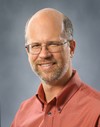Review of Volume 4:
"The Handbook can be a good reference for a higher-degree science student approaching the subject or for an expert in a similar field in astronomical instrumentation. The reader requiring an in-depth presentation of a specific topic will be guided by the rich reference lists included at the end of each chapter."
Our goal is to produce a comprehensive handbook of the current state of the art of astronomical instrumentation with a forward view encompassing the next decade. The target audience is graduate students with an interest in astronomical instrumentation, as well as practitioners interested in learning about the state of the art in another wavelength band or field closely related to the one in which they currently work. We assume a working knowledge of the fundamental theory: optics, semiconductor physics, etc. The purpose of this handbook is to bring together some of the leading experts in the world to discuss the frontier of astronomical instrumentation across the electromagnetic spectrum and extending into multimessenger astronomy.
Contents:- Volume 1: Radio Astronomical Instrumentation (Alex Wolszczan):
- Single-Dish Radio Telescopes (Christopher J Salter)
- Interferometry, Aperture Synthesis, and VLBI (E B Fomalont and Melvyn Wright)
- Low Frequency Arrays (S W Ellingson and G B Taylor)
- Feeds and Feed Systems (German Cortes-Medellin)
- Radio Receivers and Signal Processing (J Richard Fisher and Matthew A Morgan)
- The Measurement of Polarization in Radio Astronomy (Timothy Robishaw and Carl Heiles)
- Spectrometers and Polyphase Filterbanks in Radio Astronomy (Danny C Price)
- Pulsar Data Acquisition Systems (Duncan R Lorimer and Michael Kramer)
- Volume 2: UV, Optical & IR Instrumentation: Part 1 (Anna M Moore):
- Detectors:
- High Performance Silicon and III-Nitride-Based UV and UV/Optical Imaging Detectors (Shouleh Nikzad, Michael E Hoenk, J J Hennessy and L D Bell)
- Microwave Kinetic Inductance Detectors (Benjamin A Mazin)
- Filters:
- Astronomical Filters (Michael Bessell and Gabe Bloxham)
- Dispersive Elements:
- Dispersive Elements (C S Froning and J C Clemens)
- Atmospheric Dispersion Correctors:
- Atmospheric Dispersion Correctors (Andrew C Phillips)
- Astrophotonics:
- Photonic Fibers and Waveguides (Jon S Lawrence and Sergio G Leon-Saval)
- Deformable Mirrors:
- Tip/Tilt Mirrors (Jean-Christophe Sinquin and Pierre Morin)
- Stacked Array Deformable Mirrors (Jean-Christophe Sinquin and Hubert Pagès)
- Wavefront Sensing Techniques:
- Shack–Hartmann Wavefront Sensors (Alastair Basden)
- Curvature Wavefront Sensing: Simple, Elegant, and Efficient (Olivier Lai and Mark Chun)
- Wavefront Reconstruction and Control (Marcos A van Dam)
- Calibration Techniques:
- Calibration Techniques (Dae-Sik Moon)
- Adaptive Optics:
- Adaptive Optics: Single-Conjugate Natural Guide Star AO (Donald Gavel)
- Single Conjugate Laser Guide Star Adaptive Optics (Peter Wizinowich)
- Automated Adaptive Optics (Christoph Baranec, Reed Riddle and Nicholas M Law)
- Ground Layer Adaptive Optics (Miska Le Louarn)
- Multi-Object Adaptive Optics (Donald Gavel)
- Extreme Adaptive Optics (Markus Kasper)
- Solar Adaptive Optics (T Rimmele, J Marino, D Schmidt and F Wöger)
- Detectors:
- Volume 3: UV, Optical & IR Instrumentation: Part 2 (Anna M Moore):
- Interferometers:
- Speckle Interferometers (Elliott P Horch)
- Amplitude Interferometry (William J Tango)
- Intensity Interferometry (Dainis Dravins)
- Dispersed Interferometers (David J Erskine)
- Nulling Interferometry (Eugene Serabyn)
- Lunar and Planetary Occultations (Andrea Richichi)
- Astrometric Interferometry (Michael J Ireland and Julien Woillez)
- Novel Concepts, from Interferometers to Hypertelescopes (Antoine Labeyrie)
- Wide Field Imagers:
- Visible Imagers (Satoshi Miyazaki)
- Wide-Field Near Infrared Imaging (Gavin Dalton)
- Spectrographs:
- Low- and Medium-Resolution Spectrographs for Astronomy (Andrew Sheinis)
- Ultra-High Precision Doppler Spectrographs (Francesco Pepe)
- Spectropolarimetry (Christoph U Keller and Frans Snik)
- Integral Field Techniques (Fraser Clarke and Matthias Tecza)
- Multi-Object Spectrographs (Suzanne Ramsay)
- Tunable Filters (Joss Bland-Hawthorn and Gerald Cecil)
- Coronagraphs:
- Solar Coronagraphs (Douglas Rabin)
- Focal-Plane Phase-Mask Coronagraphy (Dimitri Mawet)
- Pupil-Plane Amplitude Coronagraphy (N Jeremy Kasdin, Robert J Vanderbei, and Neil T Zimmerman)
- Pupil-Plane Phase Apodization (Matthew A Kenworthy, Johanan L Codona and Frans Snik)
- UV Instrumentation:
- UV Instrumentation (James C Green)
- Interferometers:
- Volume 4: X-Ray Astronomical Instrumentation (David N Burrows):
- X-ray Optics:
- X-ray Telescopes Based on Wolter-I Optics (Giovanni Pareschi, Daniele Spiga, and Carlo Pelliciari)
- Silicon Pore Optics (Maximilien J Collon)
- Silicon Meta-Shell X-ray Optics for Astronomy (William W Zhang)
- Adjustable X-ray Optics (D A Schwartz, S Trolier-McKinstry, M Wallace, J I Ramirez and T N Jackson)
- Lobster Eye Optics (Richard Willingale)
- Lightweight Full-Shell X-ray Optics (Brian D Ramsey and Stephen L O'Dell)
- X-ray Multilayer Coatings (David L Windt)
- X-ray Detectors:
- X-ray Charge-Coupled Devices (Hiroshi Tsunemi)
- DEPFETs as High Speed Spectroscopic X-ray Imagers (Gerhard Lutz, Petra Majewski and Lothar Strüder)
- X-ray Hybrid CMOS Detectors in Astronomy (Abraham D Falcone)
- Adiabatic Demagnetization Refrigerators for X-ray Detectors (Keisuke Shinozaki and Kazuhisa Mitsuda)
- X-ray Gratings:
- Critical Angle Transmission Grating Spectrometers (David P Huenemoerder and Ralf K Heilmann)
- Off-plane X-ray Gratings (Randall L McEntaffer and Casey T DeRoo)
- X-ray Polarimetry:
- X-ray Polarimetry (Philip Kaaret)
- X-ray Optics:
- Volume 5: Gamma-Ray and Multimessenger Astronomical Instrumentation (David N Burrows):
- Laue Lenses in Hard X-ray Astronomy (Enrico Virgilli)
- Scintillation Detectors for X-ray and γ-ray Astronomy (Mark L McConnell)
- Compton Telescopes (James M Ryan)
- Gamma-Ray Pair Conversion Imaging Telescopes (W B Atwood)
- Event Reconstruction and Source Analysis Methods for Pair-Conversion Telescopes (Eric Charles and James Chiang)
- Atmospheric Cherenkov Gamma-Ray Telescopes (Jamie Holder)
- Water Cherenkov Detectors for Gamma-Ray Astronomy (Gus Sinnis)
- Neutrino Detectors (D F Cowen and I Taboada)
- Laser Interferometric Gravitational Wave Observatories (Guido Mueller)





















